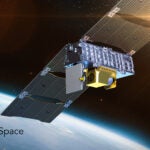
The Space Force has completed the preliminary design reviews for two potential mission payloads for the Next-Generation Overhead Persistent Infrared (Next-Gen OPIR) satellites that will become the U.S. military’s next missile warning systems, the service announced May 22. The Space and Missile Systems Center (SMC) at Los Angeles Air Force Base, California, is developing two infrared mission payloads for the program. Next-Gen OPIR prime contractor Lockheed Martin [LMT] selected Raytheon [RTN] and a Northrop Grumman [NOC]-Ball Aerospace [BLL] team to…

 By
By 











